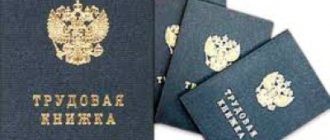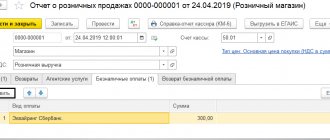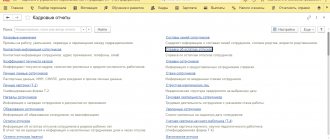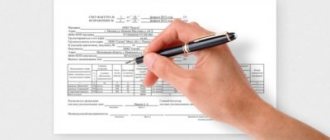Cash transaction accountants sometimes wonder whether errors, inaccuracies and corresponding adjustments are allowed in cash transactions.
The exact answer is determined by the type of document being corrected and the significance of the detected defect.
Some clerical errors or misprints lead to obvious distortions in financial and tax reporting, others can have the most unfavorable impact on the tax obligations of a business entity, and some simply are not detected during an audit and subsequently go unnoticed.
Is it even possible to correct any cash register papers?
How can changes be made to such documentation correctly if this is not prohibited by current legislation?
Correction in primary documents
Important! An accountant may make a mistake when drawing up primary accounting documents, accounting registers, various forms of accounting or tax reporting and calculations. It should be remembered that not every document can be corrected. In certain cases, it will need to be compiled again.
In accordance with Law No. 402-FZ “On Accounting” (Part 7, Article 9), corrections in primary documents are possible only if “unless otherwise established by federal laws and regulations of state accounting regulatory bodies.”
Documents that are not allowed to be amended include:
- Cash documents (expenses and receipts cash orders). Other documents that are drawn up when conducting cash transactions are subject to correction. For example, corrections are allowed in the cash book.
- Strict reporting forms . This document must be filled out legibly and clearly and corrections are not allowed. The damaged BSO must be crossed out and attached to the book of document forms for the date on which it was filled out.
- Bank documents . Corrections and errors in banking documents are unacceptable. Corrections will be perceived as a violation of the integrity of the order in the funds transfer. Such errors cannot be corrected.
Is it possible to deposit?
The absence of any adjustments in the cash transaction registers is the main requirement when a business entity prepares cash documentation.
In other words, there should be no errors, blots or corrections in the cash register papers. However, in practice, various types of amendments are still made to documents certifying the execution of cash transactions.
Sometimes for these purposes, employees of the organization use correction fluids, which is generally not acceptable.
Which documents can be corrected?
Now let's figure out which documents can be corrected. In all cases not related to those listed above, the source documents can be corrected. In this case, the correction must contain the date of correction, the signature of the persons who compiled this document and an indication of the surname and initials, as well as other details that allow identification of the person. At the same time, the main questions regarding corrections in primary documents include: How to correctly correct an error, can it simply be covered up with a proofreader? Who signs the correction if the employee who made the error is absent? (
How to correct an electronic document?
Electronic document management implies the use of an electronic digital signature. It verifies all cash documents without exception. Since it is legally prohibited to make changes when using this method of registering the facts of the economic life of an institution, the corrected document must be newly created and, like its incorrect counterpart, certified with an electronic signature.
The program used to create primary documents will also be important. The newly created document must contain the same details (date and number) and have a similar nature to the transaction being performed (receipt or expense). It should also contain a link to the revised document.
What to do if the correction cannot be signed by the author of the document
Situations can be different, and the employee who compiled the primary document could quit, get sick, or be on vacation or a business trip at the right time. Regulatory documents do not provide for a procedure in this case, so companies can develop the method and procedure by which correction is carried out independently. Persons who have the right to sign primary documents are approved by the head of the company and coordinate this issue with the chief accountant. This list may also include persons who are authorized to sign these documents. For example, corrections can be signed by a person authorized to sign primary documents (
Adjustments to PKO and RKO
If the contractor made a mistake or made a blot when filling out a cash receipt/expense order, it is strictly prohibited to make any corrections to such papers.
In RKO/PKO, the presence of any painting, crossing out or other adjustments is not allowed.
The only solution to this problem is to cross out the damaged order and issue a new document.
The crossed out (rejected) cash order should, however, be attached to the cash report generated at the end of the corresponding day.
A rejected or damaged document cannot be used to perform an outgoing/receiving transaction with cash.
Correction in invoices
The procedure by which corrections in invoices occur is determined by Resolution No. 1137 of December 26, 2011. Depending on what error was made, the company will need to issue a corrective invoice or make corrections to the erroneous document. If it is discovered that there is an error in the invoice, but it does not prevent the tax authorities from identifying the seller, buyer, property rights, name of goods, their value, etc., then new invoices may not be issued. For example, if the name of the product is indicated incorrectly on the invoice, then a new document will need to be drawn up, since in this case the taxpayer will lose the right to deduct VAT.
Important! The corrected invoice is signed by the head of the company and the chief accountant, or authorized persons.
Can consolidated accounting registers be changed?
By the instruction of the Central Bank of the Russian Federation, registered on March 11, 2014 under number 3210-U, it is strictly prohibited to correct information already entered in cash papers - completed RKO/PKO forms.
However, the same regulatory act allows for proper changes to be made to the payroll, cash register/pko register journal and, of course, the cash book.
What amendments are allowed?
Adjustment of primary accounting papers is regulated by the Law of the Russian Federation “On Accounting”, registered under number 402-FZ. Specific requirements are prescribed by Article 9 (clause 7) of this regulatory act.
Thus, it is allowed to use the following methods for correcting accounting documents:
- The first method is that the correct information is entered directly into the original (original) version of the erroneous document. Incorrect values are crossed out with a single line (the corrected value must then be read). The correct number or correct text is indicated above the crossed out value. Next to the change made, the wording “Corrected” is written, which is signed (certified) by authorized entities. Signatures are decrypted. The date of the completed adjustment is indicated.
- The second method is to draw up a corrective (corrective) document on a principle similar to the formation of an invoice for adjustment purposes.
- The third method is to cancel documents posted earlier, you should use the red reversal method.
Application procedure
Correction fluid is definitely not allowed to be used to make any changes to already compiled cash register papers.
Only corrections that are performed as follows are allowed:
- The inscription that was entered incorrectly is crossed out. However, it should be crossed out so that it is clearly legible later.
- The necessary correction is made directly above the crossed out (erroneous) inscription. Such an adjustment involves writing the correct text or the correct amount.
- On the unoccupied fields of the document being corrected or directly next to the corrected inscription, the text designation “Corrected” should be written. Responsible entities authorized to draw up cash documentation must sign this designation.
- A mandatory decoding of all affixed signatures is made, indicating the actual date of making the corresponding adjustment.
- All copies of the corrected paper are subject to similar adjustments.
Reporting correction
Reporting documents that cannot be corrected using a proofreader or similar means include calculations of insurance premiums and tax returns:
- according to VAT;
- on income tax;
- on property tax;
- on transport tax;
- for tax paid in connection with the application of the simplified tax system;
- according to UTII for certain types of activities.
Important! No corrections are allowed in the personal income tax return.
In the calculation of accrued and paid insurance premiums for compulsory health insurance against NS and occupational diseases, corrections are made as follows:
- an incorrect indicator value is crossed out;
- enter the correct value of the indicator;
- The correction is signed by the policyholder or his representative, as well as the date of correction.
If the company uses a seal, then corrections must be certified by it.
Can errors be corrected using a proofreader?
As long as people write on paper, mistakes are inevitable. At home, correctors (correction fluids, correction pens, correction rollers) are often used to correct mistakes made on paper. Is it possible to correct errors in primary accounting documents using these tools?
From a literal reading of Regulation No. 105, this cannot be done. However, we believe that the method of correcting errors described in it (by crossing out incorrect information and indicating the correct information above) is not the only possible one. The presence of traces of correction fluid in primary accounting documents (for example, in an accounting certificate, calculation certificate, etc.) does not mean that these documents are invalid. That is, we believe that in some cases the use of a proofreader to correct errors (typos, etc.) in primary accounting documents is acceptable. It is not advisable to use this method for bilateral documents (one copy of which is transferred to counterparties).
Accounting information
If an error was made in the accounting accounts when recording a business transaction, then an accounting certificate is issued, which will indicate that corrections were made to the entries. The reason for this is that, according to the Law “On Accounting”, the data reflected in the accounting registers is produced on a primary basis. This certificate is necessary in order to correct the data, as well as to confirm that an error was made. The correct data is transferred to the accounting registers based on the certificate.
A certificate is drawn up in free form with the obligatory indication of the details specified in the law.
Responsibility for errors in accounting documents
If an error made by an accountant and entered into the accounting records is noticed by tax officials during an audit, this may lead to penalties. The amount of the fine can be 10,000 - 30,000 rubles, or 20% of the amount of unpaid tax or contributions to the Pension Fund, but not more than 40,000 rubles.
Tax authorities may consider documents with errors to be fake documents and the company may be held liable on this basis. In this case, the organization and officials may face:
- fine up to 80 thousand rubles;
- a fine in the amount of half a year's salary;
- corrective labor for 2 years, compulsory labor for 480 hours;
- arrest up to 6 months.
Who makes the rules
Is it always possible to correct errors in accounting documents? Not at all. Sometimes the law or regulations adopted on its basis expressly prohibit this. For example, this applies to cash and bank documents (clause 16 of the Regulations on accounting and accounting in the Russian Federation, approved by order of the Ministry of Finance dated July 29, 1998 No. 34n).
In other cases, acceptable methods for correcting errors in primary accounting documents and accounting registers are determined by the management of the enterprise, but taking into account current legislation.
Answers to common questions
Question: If the person responsible for maintaining the document is absent, can an employee make corrections by proxy?
Answer: The fact is that a power of attorney is an instrument of civil law relations. According to labor legislation, the labor function must be performed by the employee personally, and in the Labor Code of the Russian Federation such a term as “power of attorney” is not used at all. When drawing up a power of attorney, it must indicate a specific person, but if the employment contract with the employee is terminated, this cannot be done. The procedure by which accounting is kept in the company is approved by the manager, so only he can decide who will sign the corrections in the event of the absence of the required employee.
How to adjust accounting registers
You can separately highlight ways to correct errors in accounting documents - registers (books, journals, etc.). Among them, the law names the compilation of:
- canceling entries in accounting accounts (so-called reversal);
- supplementary entries in accounts.
Formally, it is possible to completely replace the register as if it were a new document, but such a need does not arise often (dilapidation, damage, unreadability, etc.).
Of course, permission to correct the accounting register must be given by the specialist who is responsible for maintaining it.
Also see “Organization of document flow in accounting.”
Read also
07.06.2018









